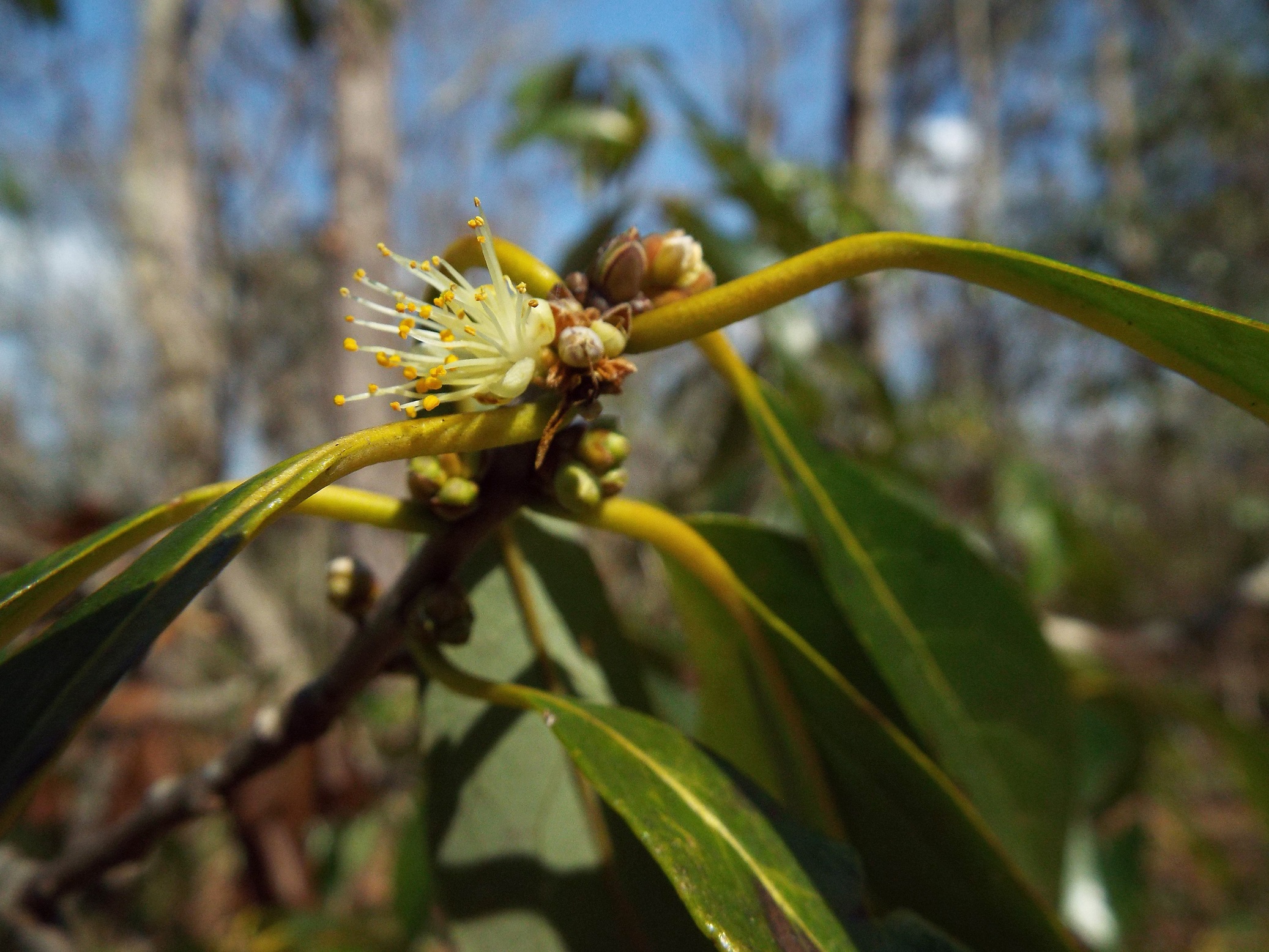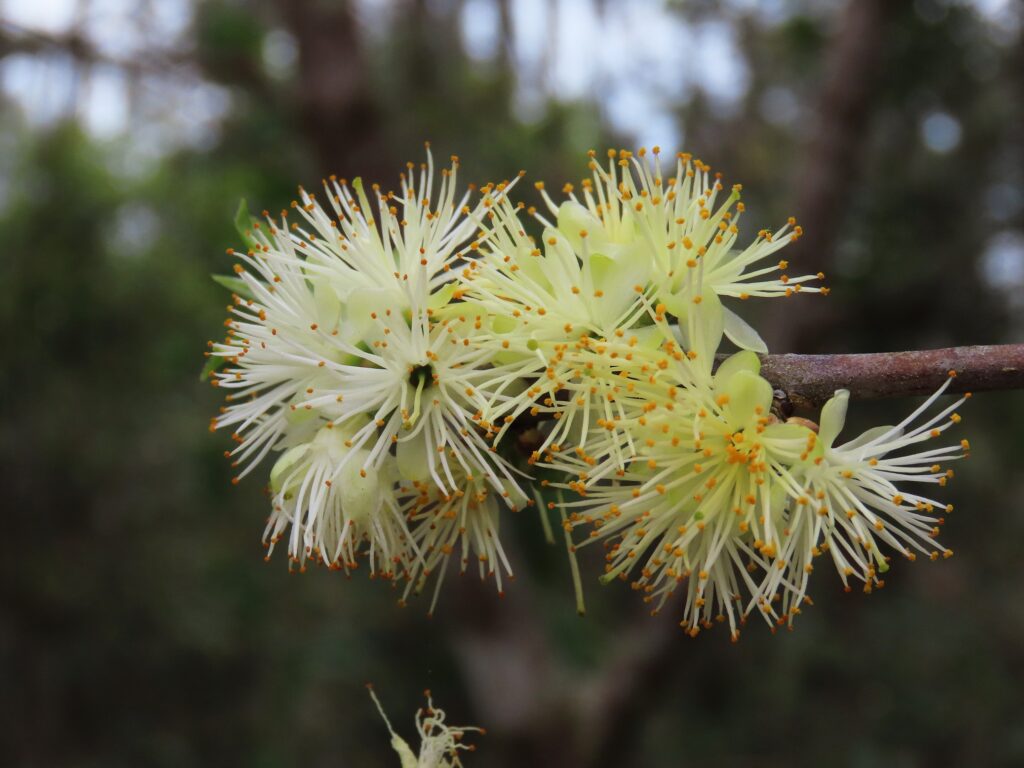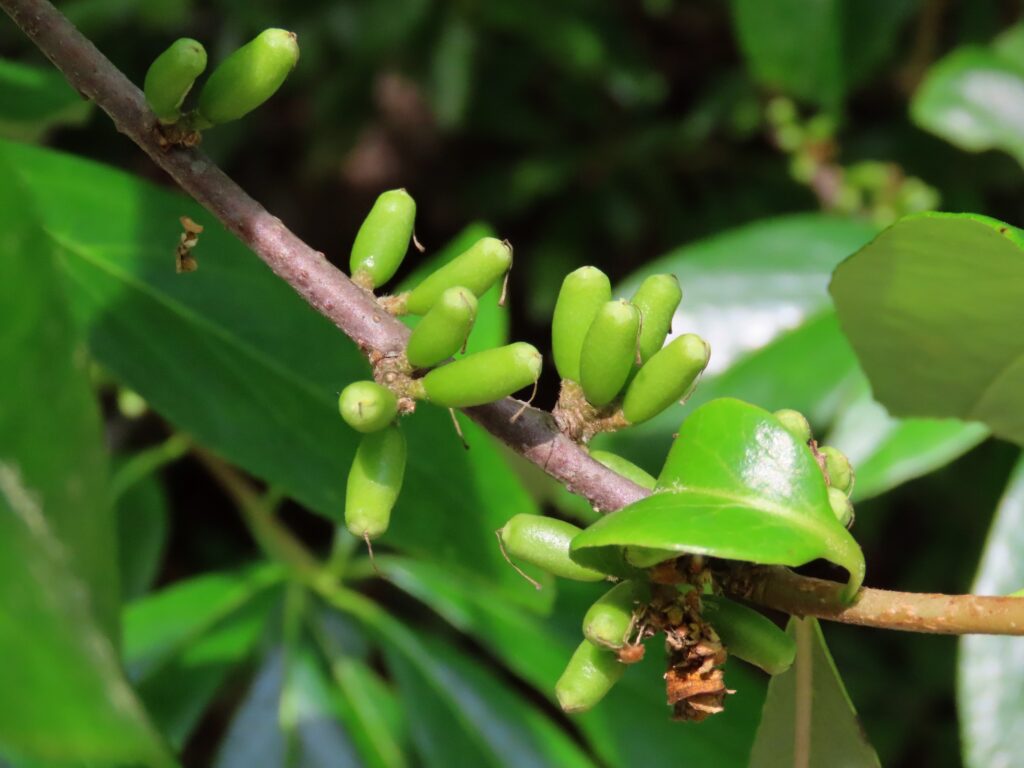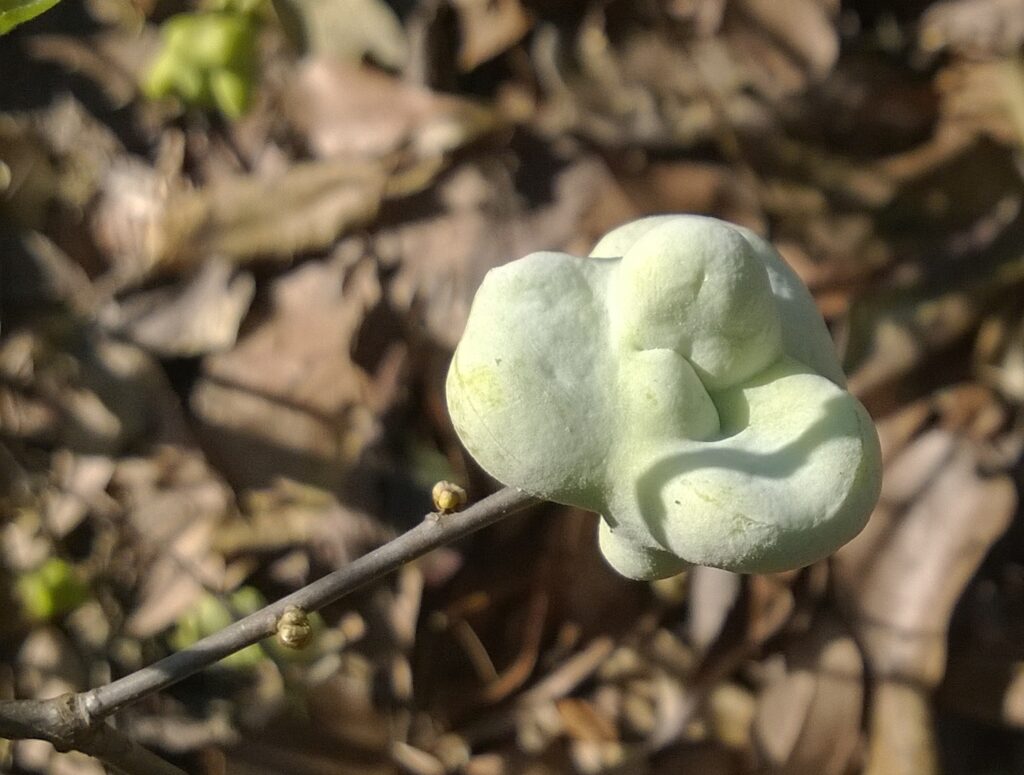



This week for Flora and Fauna Friday we have an almost evergreen understory addition to our upland woodlands, Sweetleaf (Symplocos tinctoria).
Sweetleaf, also called Horsesugar, is a large broadleaf shrub native to the Southeastern United States. Sweetleaf is an important addition to our forest ecosystems here on Edisto as it makes up a significant portion of the understory in mature upland forests around the Island. Both of its common names reference the palatability of the leaves to horses and livestock. Some say you can taste the sweetness yourself by breaking the main vein of a fresh leaf and touching it to your tongue, but I’ve never been able to taste it and Lord knows I keep trying. The specific epithet “tinctoria” means dye and the bark of the plant was once used for making a yellow dye.
Sweetleaf grows a distantly liana-like trunk sheathed in pale gray bark, mostly smooth but periodically split with furrows of cinnamon. This lumber lattice lauds large elliptic leathery leaves of emerald green, often weeping wearily when wanting water. These leaves are somewhat evergreen, as some plants will keep their leaves throughout the winter while others shed them all in fall. For as common as Sweetleaf is, its ubiquity and rather generic appearance can make it unsuspectingly difficult to identify if it’s not already on the mind. The easiest time to pick it out is in late winter. About the start of March Sweetleaf starts to bloom and its scant branches begin to glow with fuzzy flowers of cream-white and gold. Sweetleaf is one of our first flowers of the year and this final frost flush helps wake our pollinators from their winter slumber. Those flowers mature into a small, and otherwise insignificant, drupe.
Another easy way to identify Sweetleaf is by a fleshy gall that often afflicts the plant. This gall is caused by the bacterium Exobasidium symploci and it appears on Sweetleaf twigs. The gall is usually silvery blue over a lime-green base color with a rubbery, foam-like appearance. This gall is a physical mutation caused by the Exobasidium bacterium growing within the leaves or flower tissue of the shrub. These galls are generally not a health concern for the plant. However, their alien appearance in often impossible to ignore for those on an idle amble. They stand out like a sore thumb in the barren winter woods.